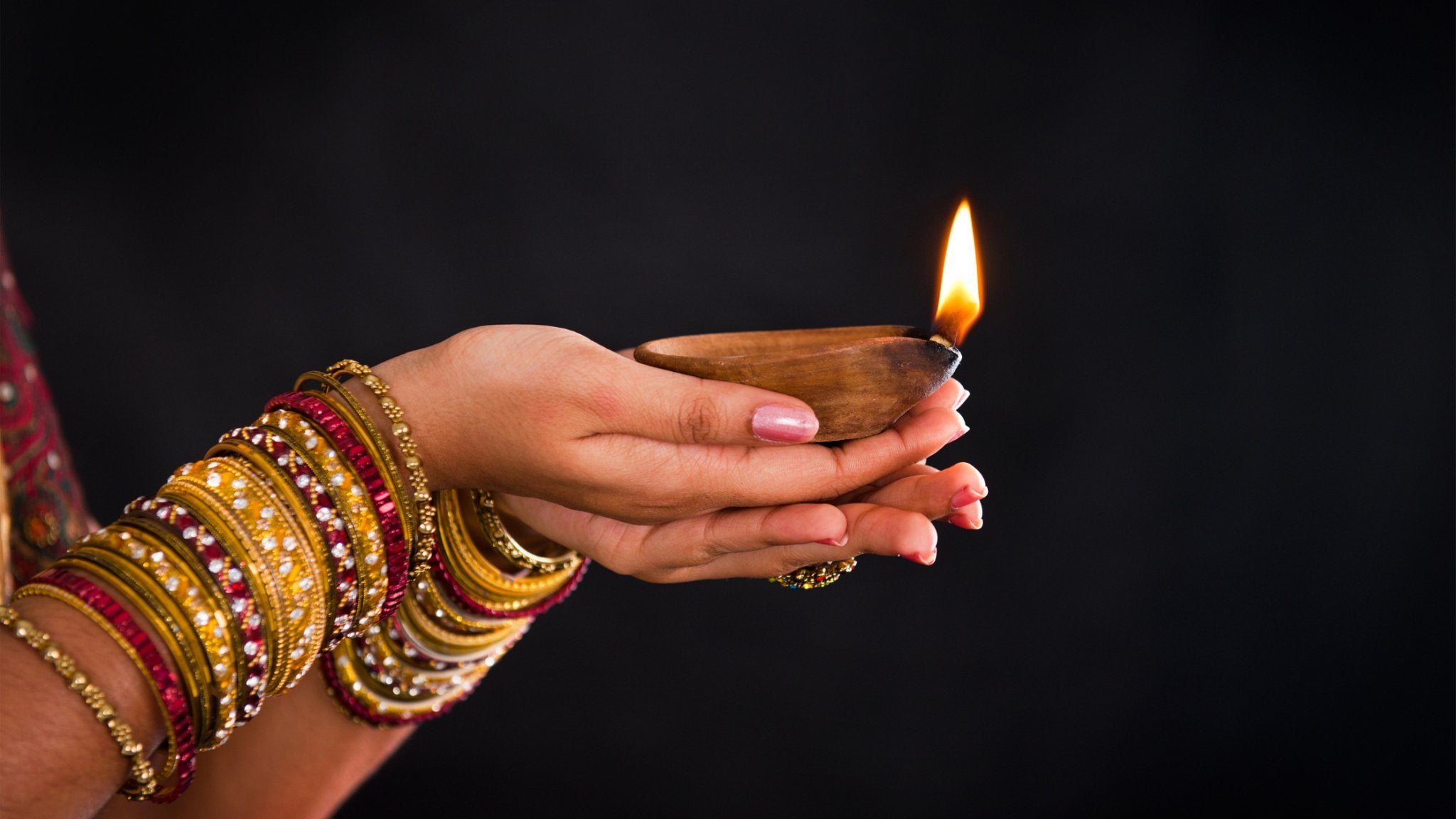Happy Diwali!
Diwali is a holiday celebrated by Hindus all over the world. It’s a celebration that has been taking place for over 2,500 years! It’s observed during the Hindu Lunisolar month of Kartika, usually between mid-October and mid-November depending on how the calendars line up.

One of the biggest and most popular festivals, Diwali celebrates the victory of light over darkness, good over evil.
The word Diwali actually comes from the Sanskrit word Deepavali. When Deepavali is broken down it means “row of clay lamps.” Avali means row, and deepa means clay lamps.
The lamps symbolize the inner light which protects people from spiritual darkness.
The Legends of Diwali
Diwali is based on several legends. Depending on what part of India you’re from, the tales vary.
In northern India, Diwali is celebrated in honor of King Rama’s return from exile.
According to this story in the Ramayana, the great Hindu epic, Rama was ordered into exile by his father, King Dasharatha. Rama and his wife Sita left the city of Ayodhya and went to live in the forest for 14 years!
During their time in exile, Sita was kidnapped by an evil king named Ravana.
Rama found and rescued Sita, killing king Ravana in the process. Then Rama and Sita began the journey back to their homeland.
The people of Ayodhya were so happy to hear that they were coming back, they lit lamps along the road and throughout the city to guide the couple home. They also set off fireworks and decorated the city.
This is thought to be what began the traditions of Diwali.
In southern India, they celebrate the Hindu god Krishna defeating another evil king and freeing 16,000 women from imprisonment!
And in the western state of Gujarat, they celebrate Diwali as the day the goddess Lakshmi came up out of the ocean and married Lord Vishnu.

Lakshmi is one of the deities who is honored around the world on this holiday. She is celebrated with oil lamps, called diyas, placed all around the home to light her way and bring wealth and prosperity to the people who live there.
Five days of Diwali
Day one is Dhanteras. It marks the official start of Diwali. People will take this day to buy ornaments, new clothes (especially for Diwali), new pots and pans for the kitchen, and utensils. It’s considered a very successful and favorable day. It’s also a day in which every home is very carefully cleaned.
It’s believed Lord Dhanvantari came out of the ocean on this day and brought with him Ayurveda, or the science of medicine.
Day two is Chhoti Diwali. Chhoti means mini or little. It is the day before Diwali. People celebrate this day by exchanging small gifts and sweets. It’s part of an old tradition and people used to consider sweets to be pure and an offering to the gods.
On this day Lord Krishna is said to have destroyed a demon called Narakasur, freeing the world from fear.

Day three is called Lakshmi Puja and is the main day of Diwali. This day is celebrated by wearing the special new clothes purchased on the first day. Fireworks are set off and sparklers are lit. People visit the temples to light candles and light their homes with diyas, welcoming Lakshmi and celebrating abundance.
People attend festivals and prepare feasts for Lakshmi Puja. This day is the peak of festivities for the week. It also marks the day which Rama and his wife Sita returned home from their exile.

Day four is Saal Mubarak, which means “Happy New Year!” Celebrated by some as the first day of their new year with gift giving, it’s a day of family and being grateful for the people in your life.
Friends and family gather together to exchange gifts and celebrate the new year, and husbands and wives celebrate and honor one another.
The fifth and final day of celebrations for Diwali is called Bhai Dooj. This day focuses on the bonds of brothers and sisters. Siblings celebrate their family ties with brothers promising to protect their sisters from any hardships in life. Pretty cool, huh?
There you have it, five days of festivities and celebrations centered around Hindu faith. It’s a party that’s as big as the Christmas celebrations in the western world!
Every Celebration Deserves Great Food!

All throughout Diwali, families prepare special foods for the season. Some of these include dishes like Samosa. These are fried or baked pastries filled with savory stuff like spiced potatoes, cheese, lentils, and meats. Yummy!

The sweets of Diwali include Gulab Jamun. These are little “berry-sized” treats made with milk-solids, sugar, rose water and cardamom. The dough is fried and soaked in rose-flavored syrup and makes a sweet treat to enjoy during the festival!

Another fun, aromatic, and sweet dish for the Diwali celebrations is Moong dal halwa. Made from Moong lentils, sugar, ghee (clarified butter,) and cardamom powder, the texture and scent make it an extra special Diwali treat!
Diwali Is A Celebration For All
Diwali is a holiday celebrated in India and by everyone of the Hindu faith. It’s also celebrated by others who’ve adopted the festivities and attributed something special which happened in their beliefs as well.
The Sikh celebrate it as the day which their sixth guru, Guru Hargobind, and 52 other princes were released from prison in 1619. They consider it a day of liberation.
In Jainism, Diwali represents the anniversary of Lord Mahavir’s freedom from the cycle of reincarnation.
Everyone in India celebrates Diwali. The holiday isn’t limited to just one set of beliefs.
A beautiful coming together of people from all walks of life, celebrating the things that they hold sacred and which are special to them makes for a delightful holiday.
May the light of the diyas guide you toward the way of wealth and prosperity. Happy Diwali!
You can enjoy a taste of India right in your own kitchen and explore the history, geography, culture, art and music through our India box at eat2explore!







